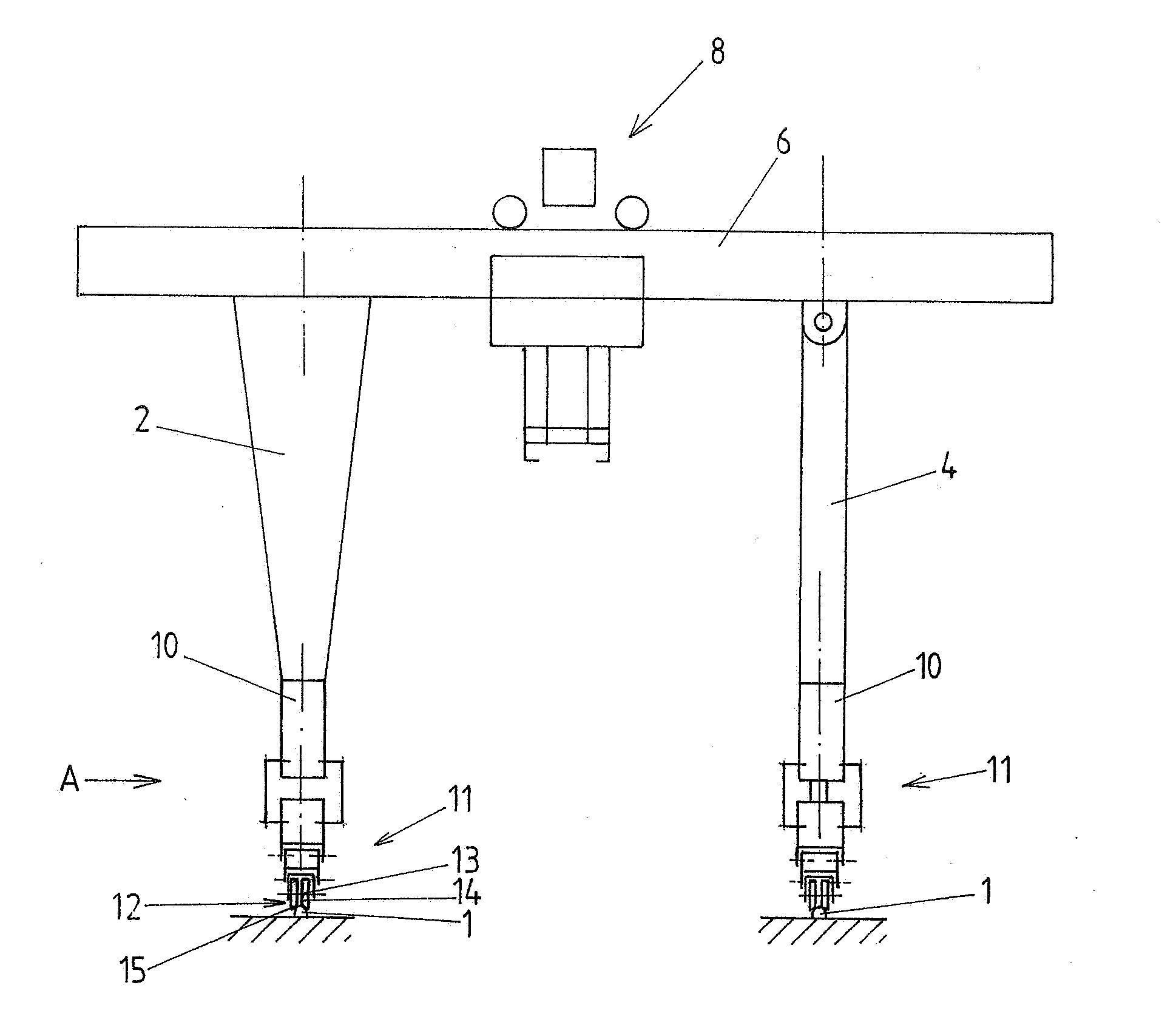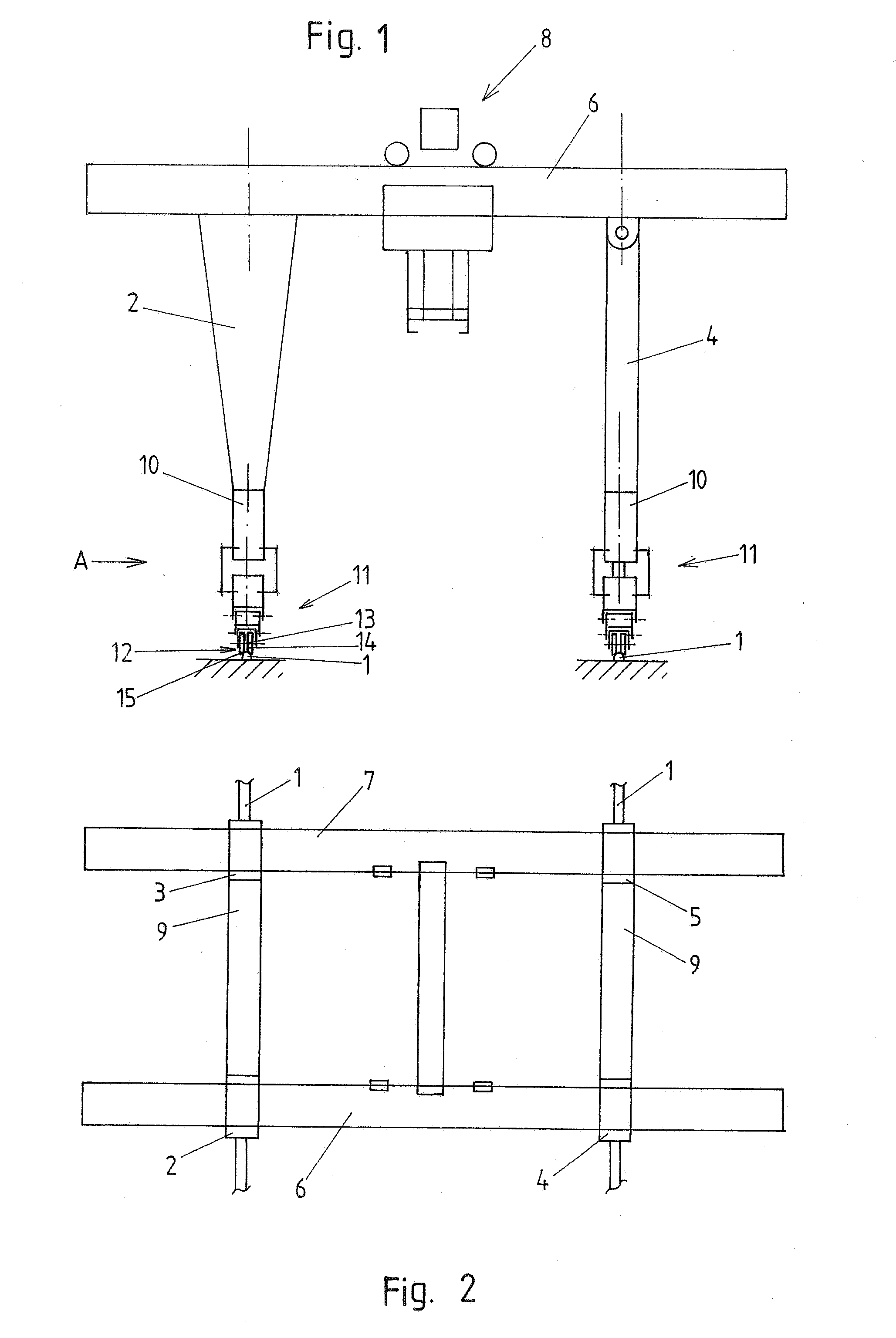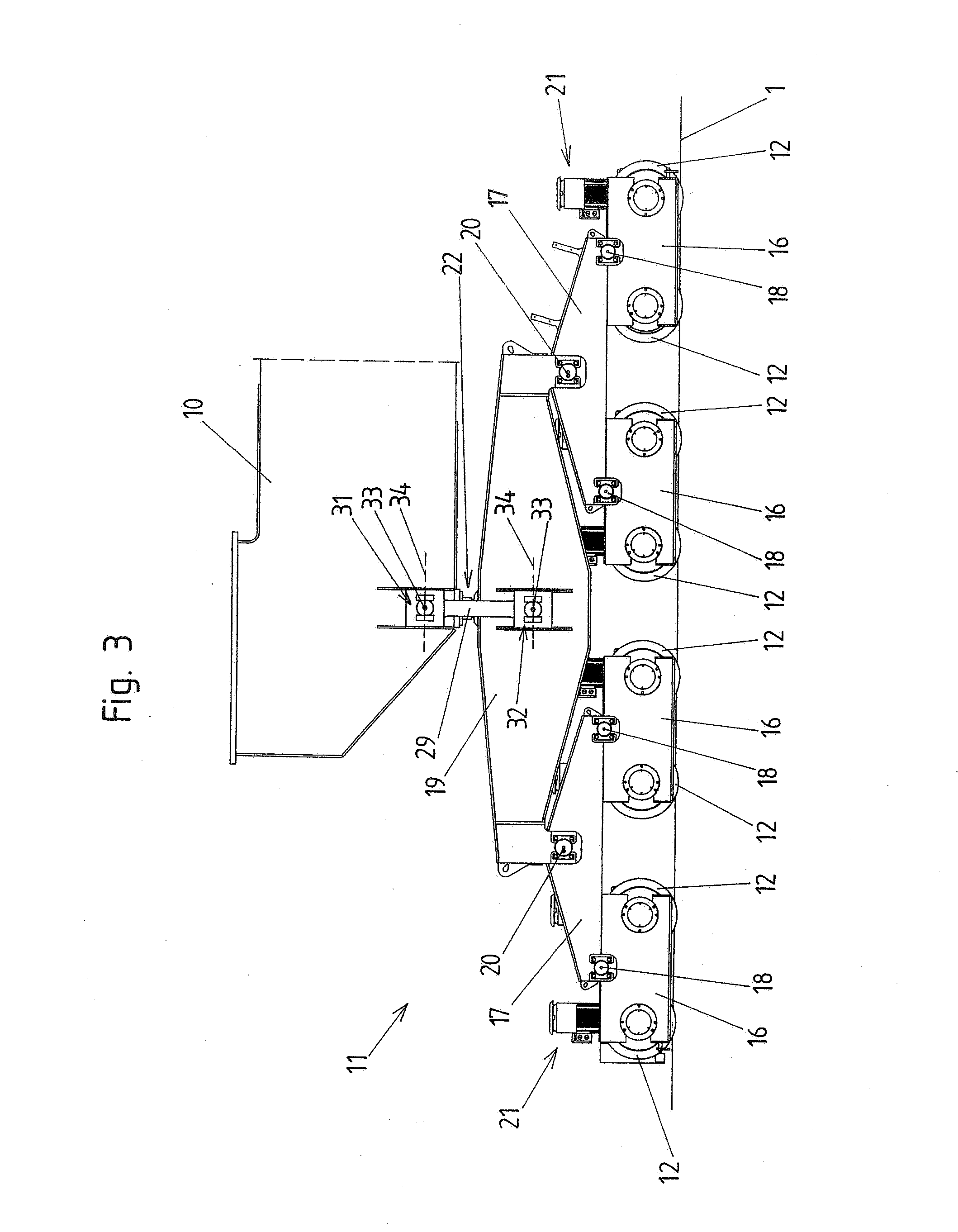Crane
a technology of cranes and crates, which is applied in the direction of passenger carriages, braking devices for hoisting equipment, cranes, etc., can solve the problems of uneven increased wear of the track guiding means, and increased wear of the wheel running surfaces,
- Summary
- Abstract
- Description
- Claims
- Application Information
AI Technical Summary
Benefits of technology
Problems solved by technology
Method used
Image
Examples
Embodiment Construction
[0026]An embodiment example of the invention is shown in the drawings. The crane is constructed as a gantry crane which can move on a runway formed by two rails 1 laid at a distance from one another. A gantry crane of this kind usually has four legs 2, 3, 4, 5. Constructions with three legs are also known. Further, two supports can also be provided. The legs 2-5 and supports carry the transverse girder or transverse girders 6, 7 along which a trolley 8 is movable or which are provided with another type of movable or fixed hoisting device. When the construction is carried out with two or more transverse girders 6, 7, connection girders 9 extend between the latter.
[0027]An end carriage 10 is arranged at the lower ends of the legs 2, 3; 4, 5 arranged on a respective side of the gantry and connects them. The end carriages 10 serve to connect the steel construction of the crane to the individual traveling gear groups 11 of the crane traveling gear. A traveling gear group I of this kind i...
PUM
 Login to View More
Login to View More Abstract
Description
Claims
Application Information
 Login to View More
Login to View More - R&D
- Intellectual Property
- Life Sciences
- Materials
- Tech Scout
- Unparalleled Data Quality
- Higher Quality Content
- 60% Fewer Hallucinations
Browse by: Latest US Patents, China's latest patents, Technical Efficacy Thesaurus, Application Domain, Technology Topic, Popular Technical Reports.
© 2025 PatSnap. All rights reserved.Legal|Privacy policy|Modern Slavery Act Transparency Statement|Sitemap|About US| Contact US: help@patsnap.com



